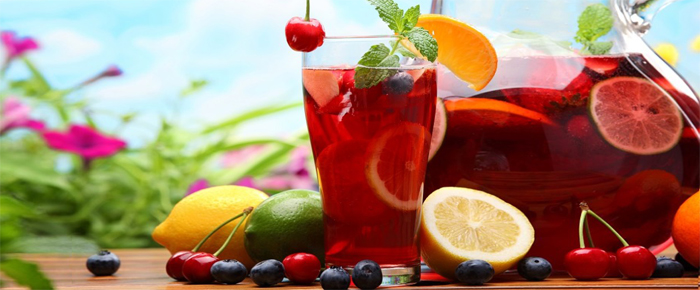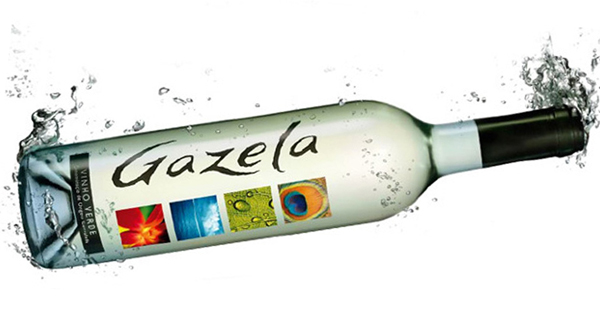
By Rick Riozza
During these long summer months, I know most of us try to get out of Dodge when we can—some for spurts, some take the summer off. For those here today and almost exasperated due to the mean heat, we’ve got some pleasant wine news to speak of.
But first: While settling down to read the Health Section in last week’s Desert Sun, I took a quick glance at the front page, titled, “A Toast to Fitness—Hiking plus wine hits the spot”, winced and spoke out loud, “Really!?? As John McEnroe would say, “You can’t be serious!”
How many times do we hear about hikers and tourists hiking in our local hills and mountains fainting and falling over from heat exhaustion and/or dehydration? Resident newscasters are all over the tube warning us to practically carry our weight in water when taking any type of jaunt up the hill.
(I know—I know, quickly into the Desert Sun article, we find out they’re talking about hiking up in the Santa Cruz mountains—but let’s run with this facetious juxtaposition for a bit.)
First off—incredulously, there are some wine lovers out there who practice white wine abstinence—and there’s nothing we can do. Believe me, no matter how I attempt to woo them with some of the greatest white wines in the world, they are ever reluctant! “Read and moisten our lips—No White Wine!” They won’t even look down the white wine aisle in the store!
So what about this group of mountain hiker/vino rosso enthusiasts who are taking their wine pouches up the climb in triple digit heat! Hey—I can appreciate the dense, raspberry jammy, mocha, full-bodied Opolo Vineyards Mountain Zinfandel that carries 16.3 % alcohol, but are we taking that big boy up a cliff on a hot afternoon? I don’t think so.
For those who can’t put away the vino no matter what, and incredibly still shying from thirst quenching H2O or an ice-cold beer, let me recommend a couple of succulent wines that will keep you from dehydrating and wilting away.
We’ve covered some really thirst quenching wines this summer, especially the Sauvignon Blancs and un-oaked Chardonnays. However, if someone were to put a pistol to our heads and severely insist that we must take a wine up the summit in August, then I plead with you guys to carry up a Vinho Verde. (And of course we’re having fun here on our hikes; we’re all drinking lots of water. The wine and beer is chilling back home.)
Really—Coachella Valley in our long and hot summer should simply adopt the Vinho Verde wine as the wine of choice. Light, low-alcohol, tangy, fresh, crisp, with tiny spritz-y bubbles that can turn a hot day into a pleasurable quaffing hot day.
Vinho Verde [VEE-nyoh Vair-deh] is both the name of the region and the wine that comes from the extreme northwest of Portugal that faces the Atlantic Ocean. It’s cool and very rainy, and the entire area is like one single green garden. I guess that’s where the wine gets its name. And all the green rainy nature of what this wine is about, could well keep us sane in the midst of a hot drought.
 Here the price is right: The decorative bottle, Gazela Vinho Verde, $6, is what we’d call an “entry-level” wine—so reasonably priced, it behooves the uninitiated to buy a bottle just to see how good it is. Light, fresh and straightforward with floral and lemon aromas and flavors, the wine is available at most markets.
Here the price is right: The decorative bottle, Gazela Vinho Verde, $6, is what we’d call an “entry-level” wine—so reasonably priced, it behooves the uninitiated to buy a bottle just to see how good it is. Light, fresh and straightforward with floral and lemon aromas and flavors, the wine is available at most markets.
So after one realizes how this wine handles the hot day, the wine enthusiast may wish to taste a Vinho Verde that’s a bit more up-scale and carries a bit more complexity. Here Vera Vinho Verde $10 is the ticket with its fresh and lively quaff of citrus flavors, stone fruit, and a lingering mineral finish.
Sangria is again the talk-of-the-town. Indeed! Sangria is caliente in the whole USA. And like it or not it’s being bottled!
 “We think bottled sangria is the next big thing in wine”, says Peter Deutsch CEO of Deutsch Family Wine & Spirits Co. Wine Spectator magazine has reported, “The four leading bottled sangria brands grew 43 percent in the U.S. from 2010 to 2013. Yellow Tail Sangria expects to sell more than 200 percent more cases just this year. Gallo’s “Madria” sangria brand grew from 305,500 cases in 2010 to over 470,000 cases last year.” Eppa Sangria is the Deutsch product made organic that includes pomegranate, blueberry, Mediterranean Blood Orange, and açaí palm fruit.
“We think bottled sangria is the next big thing in wine”, says Peter Deutsch CEO of Deutsch Family Wine & Spirits Co. Wine Spectator magazine has reported, “The four leading bottled sangria brands grew 43 percent in the U.S. from 2010 to 2013. Yellow Tail Sangria expects to sell more than 200 percent more cases just this year. Gallo’s “Madria” sangria brand grew from 305,500 cases in 2010 to over 470,000 cases last year.” Eppa Sangria is the Deutsch product made organic that includes pomegranate, blueberry, Mediterranean Blood Orange, and açaí palm fruit.
Remember old school sangria? A wine punch made with left-over dry red (or white) wine with slices of oranges, lemons, peaches, and maybe pineapple, limes, apples and berries along with some brandy and/or orange liqueur that’s all put into a pitcher and chilled in the fridge overnight. It’s not a lot of work, but it just can’t be made at the last minute. And just before serving, a little spritz is added (sparkling or tonic water, 7-up, or even ginger ale) along with ice.
If you’re making this punch yourself, the beauty of the drink is that there is no exact recipe. There is not a standard wine for sangria. However, if you’d like to make one in tune with Spanish tradition, use the reasonably priced Garnacha (Grenache) or find another medium-bodied red wine. For white sangria, pick a zesty and/or aromatic white wine such as Torrontés, Chenin Blanc, Riesling or Pinot Gris, and add any kind of fruit to garnish.
Stay Cool! & Cheers!









































